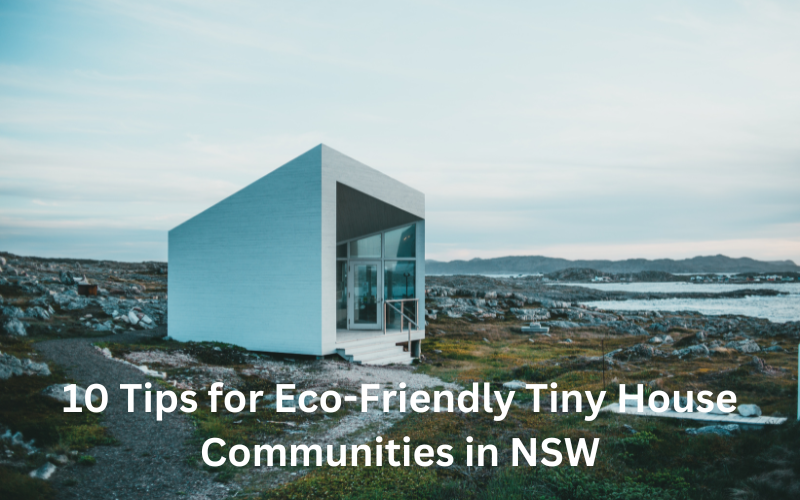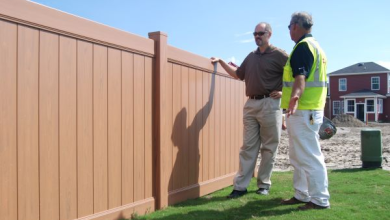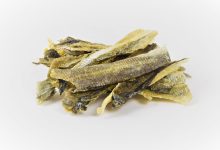10 Tips for Eco-Friendly Tiny House Communities in NSW

To create sustainable tiny house communities in NSW, consider these 10 tips for reducing environmental impact and promoting eco-friendly practices. From utilizing sustainable materials to implementing energy-efficient design, each tip plays an essential role in fostering a greener community. By incorporating strategies like water conservation, waste management, and renewable energy sources, you can take significant steps towards a more sustainable lifestyle. Stay tuned to discover how these tips can help transform your tiny house community into an environmentally conscious haven.
Key Takeaways
- Prioritize sustainable materials like recycled wood and reclaimed metal.
- Implement passive solar design for energy efficiency.
- Integrate rainwater harvesting systems for water conservation.
- Foster community engagement through shared garden spaces.
- Incorporate solar panels for renewable energy.
Sustainable Materials
To create eco-friendly tiny house communities in NSW, prioritize using sustainable materials that are sourced locally and have minimal environmental impact.
Embrace recycled materials in construction to reduce waste and lower the carbon footprint. Utilize sustainable construction methods that focus on green building practices and eco-conscious design.
Incorporating recycled wood, reclaimed metal, and repurposed materials not only adds character to the tiny homes but also aids in conserving natural resources.
Opt for non-toxic paints and finishes to enhance indoor air quality and guarantee a healthier living environment for the community.
Energy-Efficient Design
Implementing passive solar design principles can greatly enhance the energy efficiency of tiny house communities in NSW. By strategically positioning windows, thermal mass, and insulation, these homes can maximize natural light and heat from the sun during winter while minimizing direct sunlight in summer.
This design reduces the need for artificial heating and cooling, lowering energy consumption. Additionally, incorporating green roofs can provide insulation, reduce stormwater runoff, and contribute to a healthier environment. Green roofs help regulate indoor temperatures, further decreasing the reliance on mechanical heating and cooling systems.
When planning energy-efficient designs for tiny house communities in NSW, prioritizing passive solar techniques and green roofs can markedly reduce the ecological footprint of these sustainable living spaces. learn more about tiny home for sale nsw.
Water Conservation Strategies
Strategically integrating rainwater harvesting systems can greatly enhance water conservation efforts within tiny house communities in NSW. By capturing rainwater from rooftops and storing it for later use, residents can reduce their reliance on mains water.
Implementing greywater recycling systems further maximizes water efficiency by reusing water from sinks and showers for tasks like watering gardens. Installing water-saving fixtures such as low-flow toilets and faucets can markedly decrease water wastage.
Additionally, opting for drought-resistant landscaping can minimize the need for irrigation, conserving water during dry periods. These strategies not only promote sustainable water usage but also contribute to cost savings for residents in tiny house communities.
Community Gardens
As you explore the concept of community gardens in eco-friendly tiny house communities, you’ll discover the beauty of shared garden spaces where residents come together to cultivate plants and foster a sense of togetherness.
Sustainable gardening practices like composting, water conservation, and organic gardening techniques are often employed in these communal spaces, promoting environmental responsibility and self-sufficiency.
The benefits of communal gardening extend beyond just producing fresh, organic produce; they also create opportunities for social interaction, skill-sharing, and a deeper connection to nature within the community.
Shared Garden Spaces
Community gardens within the eco-friendly tiny house communities in NSW offer residents the opportunity to cultivate fresh produce collectively in a sustainable manner. These shared garden spaces foster a sense of community and enable individuals to engage in environmentally conscious practices.
Here are some ways these communal gardens benefit residents:
- Garden collaborations: Residents work together to maintain the garden, share responsibilities, and learn from each other.
- Seed swaps: Exchanging seeds allows for a diverse range of plants to be grown, promoting biodiversity within the community.
- Urban farming: Utilizing small spaces efficiently for agriculture helps reduce the community’s ecological footprint.
- Harvest sharing: Surplus produce can be shared among residents, reducing food waste and ensuring everyone has access to fresh, organic food.
- Skill development: Residents can learn new gardening techniques and share their expertise with others, fostering a culture of continuous learning and improvement.
Sustainable Gardening Practices
Implementing sustainable gardening practices in these communal spaces guarantees that the eco-friendly tiny house communities in NSW prioritize environmental stewardship while promoting community engagement and food security. To optimize space and increase yield, consider incorporating vertical gardening techniques. Vertical gardening utilizes structures like trellises, hanging planters, and stacked containers to maximize growing area, ideal for small communal gardens.
Additionally, embracing permaculture design principles can foster self-sustaining ecosystems within the garden. By creating diverse plant communities that work together harmoniously, permaculture minimizes waste, reduces the need for external inputs, and promotes natural pest control. These practices not only enhance the beauty and productivity of the communal gardens but also contribute to the overall sustainability of the tiny house communities.
Benefits of Communal Gardening
Maximizing resources and fostering a sense of shared responsibility, communal gardening offers a multitude of benefits for residents in eco-friendly tiny house communities.
- Harvest Sharing: Residents can enjoy a variety of fresh produce from the communal garden, promoting healthy eating habits and reducing the need for store-bought items.
- Garden Swaps: Exchanging surplus fruits, vegetables, or herbs with neighbors fosters a sense of community and allows for a diverse range of produce in each household.
- Skill Sharing: Residents can learn from each other, sharing gardening tips, tricks, and knowledge to improve their own gardening practices.
- Reduced Environmental Impact: By collectively tending to a shared garden, residents can minimize water usage, reduce waste, and promote biodiversity.
- Increased Social Interaction: Working together in the garden creates opportunities for bonding, building relationships, and creating a stronger sense of community within the tiny house neighborhood.
Waste Management Systems
To effectively manage waste in eco-friendly tiny house communities in NSW, a thorough system that prioritizes recycling and composting is essential. Waste reduction strategies should be implemented at the community level to minimize the environmental impact.
Setting up detailed recycling programs will encourage residents to properly sort and recycle their waste materials. Providing educational resources and incentives for recycling can further enhance participation.
Effective waste management not only reduces the amount of waste ending up in landfills but also conserves resources by promoting a circular economy. By actively engaging in recycling programs, eco-friendly tiny house communities in NSW can greatly contribute to sustainability efforts while fostering a culture of environmental responsibility among residents.
Composting Practices
To enhance the waste management system in eco-friendly tiny house communities in NSW, a focus on implementing efficient composting practices is key. Utilizing kitchen scraps for composting not only reduces waste but also creates nutrient-rich soil for gardening.
Consider implementing worm composting, also known as vermicomposting, as a space-efficient method that accelerates the decomposition process.
Here are some tips for effective composting practices:
- Separate kitchen scraps like fruit peels and vegetable leftovers for composting.
- Utilize a designated composting area or bin for organic waste.
- Introduce red worms to aid in breaking down the materials quickly.
- Regularly mix the compost pile to aerate it and speed up decomposition.
- Use the resulting compost to nourish plants in the community garden or individual plots.
Renewable Energy Sources
Consider incorporating solar panels as a primary source of renewable energy to power the tiny house communities in NSW. Solar panels harness the abundant sunlight in the region, providing a sustainable and cost-effective energy solution.
By installing solar panels on rooftops or in communal areas, these communities can greatly reduce their reliance on traditional power sources. Additionally, integrating wind turbines can further enhance the renewable energy capacity of the tiny house communities.
Wind turbines are particularly effective in areas with consistent wind patterns, supplementing the energy generated by solar panels. This hybrid approach guarantees a more stable and reliable renewable energy supply, reducing the environmental impact of these communities while promoting self-sufficiency and resilience.
Wildlife-Friendly Landscaping
Harness the potential of wildlife-friendly landscaping to create a harmonious environment for both residents and local fauna in the eco-friendly tiny house communities of NSW. By implementing bird-friendly habitats and natural landscaping, you can enhance biodiversity and provide a sanctuary for native wildlife.
Consider incorporating wildlife corridors throughout the community to facilitate the movement of animals and promote genetic diversity. Planting native species not only reduces water usage but also supports the local ecosystem by attracting insects and birds essential for pollination and seed dispersal.
Here are some key strategies to achieve wildlife-friendly landscaping:
- Create bird-friendly habitats
- Utilize natural landscaping techniques
- Develop wildlife corridors
- Plant native species
- Prioritize biodiversity by supporting local flora and fauna
Shared Transportation Initiatives
Shared transportation initiatives play an essential role in promoting sustainability and reducing carbon emissions within eco-friendly tiny house communities in NSW. Implementing a carpooling program encourages residents to share rides, reducing the number of vehicles on the road. Introducing a bike-sharing initiative not only promotes physical activity but also reduces the reliance on cars for short trips. Additionally, establishing an electric vehicle fleet within the community provides a sustainable alternative to traditional gasoline-powered cars. Partnering with public transport services enhances accessibility to nearby towns and cities, encouraging the use of public transportation over private vehicles. By incorporating these shared transportation initiatives, eco-friendly tiny house communities in NSW can significantly decrease their carbon footprint while promoting a culture of sustainability.
| Initiative | Description | Benefits |
| Carpooling program | Residents share rides to reduce vehicles on the road | Decreased traffic congestion |
| Bike sharing initiative | Community bike-sharing system for short trips | Promotes physical activity |
| Electric vehicle fleet | Sustainable alternative to gasoline-powered cars | Reduces carbon emissions |
Eco-Friendly Events and Workshops
You can discover how eco-friendly events in NSW are implementing sustainable practices, like zero-waste initiatives and renewable energy sources.
Workshops are focusing on green initiatives such as upcycling and composting, providing hands-on experiences for attendees.
Community education programs play an essential role in raising awareness about environmental issues and promoting eco-conscious living practices.
Event Sustainability Practices
To promote sustainability and minimize environmental impact, eco-friendly events and workshops in NSW incorporate various innovative practices and technologies. These events focus on green event planning, sustainable event practices, eco-conscious event management, and zero waste events.
Here are some key practices adopted by such events:
- Utilizing compostable or reusable serving ware
- Implementing water refill stations to reduce single-use plastic
- Encouraging attendees to carpool or use public transportation
- Incorporating renewable energy sources for power
- Partnering with local farmers and vendors for organic, locally sourced catering
Workshop Green Initiatives
When organizing eco-friendly events and workshops in NSW, incorporating green initiatives is essential to reduce environmental impact and promote sustainability. Green workshops focusing on sustainable living can be a great way to engage the community in environmentally friendly practices.
Interactive sessions that demonstrate practical tips for reducing waste, conserving energy, and living more sustainably can be highly effective. Consider hosting workshops on topics like composting, rainwater harvesting, renewable energy, or upcycling to inspire participants to adopt eco-conscious habits.
Encourage hands-on activities and group discussions to enhance learning and foster a sense of community among participants. By incorporating these green initiatives into workshops and events, you can empower individuals to make positive changes towards a more sustainable lifestyle.
Community Education Programs
Community education programs play a crucial role in promoting eco-friendly events and workshops by disseminating knowledge and fostering sustainable practices among participants. These programs serve as platforms for fostering environmental awareness and encouraging community engagement. Through interactive workshops and informative events, individuals can learn practical skills and strategies to reduce their ecological footprint.
Key components of successful eco-friendly community education programs include:
- Hands-on Eco-Friendly Workshops: Offering practical sessions on sustainable living practices.
- Guest Speakers: Inviting experts to share insights on eco-friendly initiatives.
- Field Trips: Organizing visits to sustainable projects for real-life examples.
- Online Resources: Providing access to digital materials for continuous learning.
- Collaborative Projects: Encouraging teamwork on eco-friendly community initiatives.
Conclusion
As you work towards creating eco-friendly tiny house communities in NSW, remember that every small action can make a big difference. Just like how a single seed can grow into a flourishing garden, each sustainable choice you make contributes to a greener future for all.
By implementing these 10 tips and fostering a culture of environmental responsibility, you can help create a thriving community that’s both eco-friendly and sustainable for generations to come.








